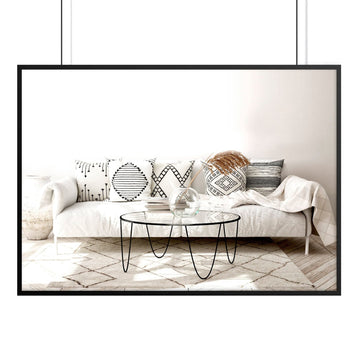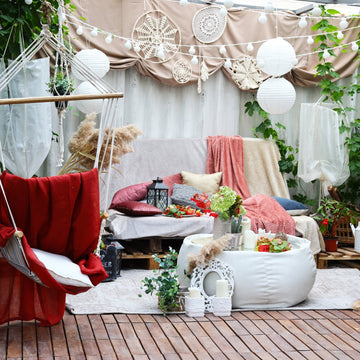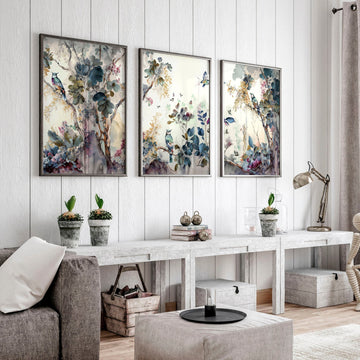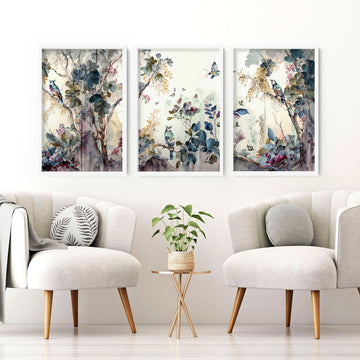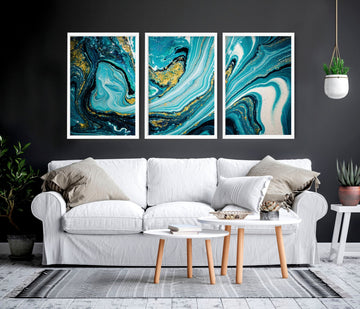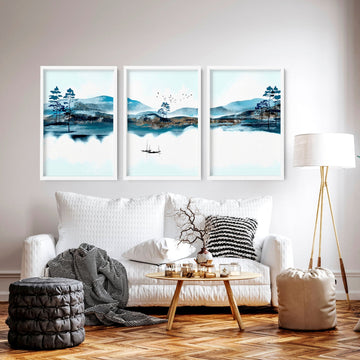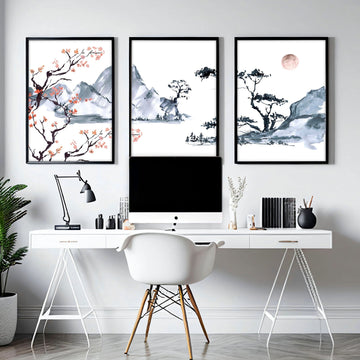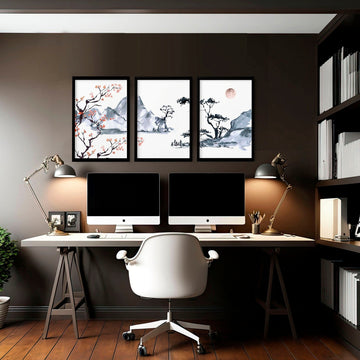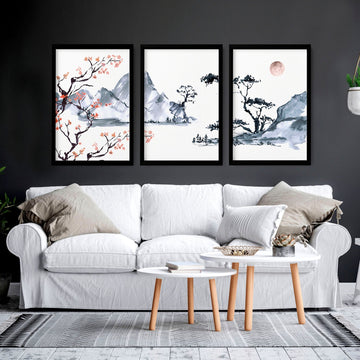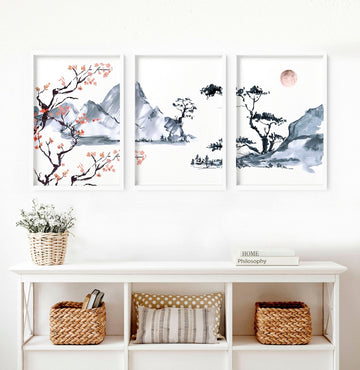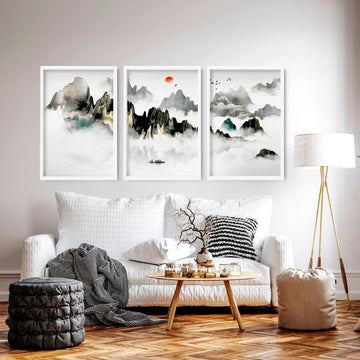Imagine stepping into a living room that seamlessly blends the tranquillity of Japanese minimalism with the clean lines of Scandinavian simplicity. The result is an exquisite fusion known as Japandi Style.
Japandi living rooms draw inspiration from two distinct design philosophies: Japanese minimalism and Scandinavian simplicity. Japanese and Scandinavian cultures appreciate clean lines, natural materials, and peaceful spaces. Japandi living rooms combine these aesthetics. The captivating design trend captures the essence of both cultures in an elegant and accessible way.The concept of Japanese minimalism centres around the idea of creating a space free from clutter, where each item is purposeful and carefully chosen.
Table of Contents:
Introduction
1. The Roots of Japanese Minimalism
2. Key Elements of Japandi Style
3. Creating a Japandi style Oasis in your Living Room
Conclusion

In a world where our lives are often filled with noise and chaos, the Japandi living room indeed offers a much-needed refuge. It is a space where you can escape the outside world and find solace in the simplicity of your surroundings. The blend of Japanese minimalism and Scandinavian simplicity also creates a calming atmosphere that promotes mindfulness and relaxation.
The fusion of Japanese minimalism and Scandinavian simplicity in Japandi living rooms offers a departure from the fast-paced, cluttered world we often find ourselves in. It provides a sanctuary where we can surely find peace and tranquillity amidst the chaos.
1. The Roots of Japanese Minimalism
The essence of Japandi living rooms lies in the roots of Japanese minimalism, shaped by a cultural heritage valuing simplicity, harmony, and also Zen principles. This design philosophy centres around the concept of “ma,” appreciating the space between objects and embracing emptiness.
Japanese minimalism urges the removal of excess, focusing solely on the essentials to create a tranquil environment. This approach indeed prioritizes functionality and clean lines, blending seamlessly with Scandinavian simplicity.
“Minka” homes embody the core principles of Japanese minimalism, with open floor plans, sliding doors, and also natural materials fostering a calming atmosphere through the use of natural light and integration of nature.
Another pillar is Wabi-Sabi, celebrating imperfection and simplicity, finding beauty in the natural passage of time and embracing natural materials and textures.

Minimalism extends beyond physical spaces into daily rituals and lifestyles in Japanese culture. The mindfulness of “ma” is certainly evident in tea ceremonies, where pauses are incorporated to appreciate the serenity of the moment.
Zen Buddhism also influences Japanese minimalism, valuing simplicity, meditation, and mindfulness. Zen gardens, or “karesansui,” exemplify this essence with their meticulously designed spaces featuring raked gravel, symbolic rocks, and also arranged vegetation.
Incorporating Japanese minimalism into Japandi living rooms goes beyond aesthetics, encouraging mindfulness, harmony, and an appreciation for simplicity. This fusion of Japanese minimalism and Scandinavian simplicity indeed creates a timeless design aesthetic promoting balance, serenity, and a deeper connection with our surroundings.

By applying minimalist principles and incorporating elements of nature and simplicity, we can create Japandi living rooms that evoke tranquillity and harmony. The roots of Japanese minimalism certainly guide the creation of spaces that foster calmness, mindfulness, and a profound appreciation for simplicity.
2. Key Elements of Japandi Style
Japandi style is a beautiful fusion of Japanese minimalism and Scandinavian simplicity, creating a harmonious and serene living space. If you’re looking to embrace this unique design concept, here are some key elements to consider:
Neutral Color Palette
The colour palette of the Japandi style is predominantly neutral, with a focus on earthy tones such as whites, greys, browns, and blacks. These muted hues create a calming and peaceful atmosphere, allowing the mind to relax and unwind. Keeping the colours subdued makes the space more spacious and open, enhancing the minimalist aesthetic.

Natural Materials
In both Japanese and Scandinavian designs, natural elements play a significant role. Japandi style incorporates natural materials to bring warmth and texture to the space. Wood is a prominent material, especially light-toned wood like oak, birch, or ash, often used for furniture and flooring. Unfinished or lightly treated woods highlight the natural grain and imperfections, adding character and a touch of authenticity.

Functional Furniture
Japandi style prioritises functionality when it comes to furniture selection. Clean lines and minimalistic designs are characteristics shared by both Japanese and Scandinavian styles. Opt for furniture pieces that serve a purpose and maximise space efficiency. Think low-profile sofas, streamlined shelves, and multifunctional storage solutions. Keep clutter to a minimum, embracing the concept of “less is more.

Wabi-Sabi Aesthetics
Wabi-sabi is a Japanese philosophy that embraces imperfections and the beauty that comes with age and use. In Japandi style, this aesthetic is celebrated by incorporating vintage or distressed items. Worn-out wooden furniture, vintage artworks, or weathered textiles can add a sense of history and also character to the space. This juxtaposition of elegance and rustic charm creates a visually intriguing and unique ambience.
Organic Shapes
Both Japanese and Scandinavian designs favour organic shapes inspired by nature. Incorporating curved lines and flowing forms in furniture and decor can soften the overall aesthetic and create a sense of harmony and balance. Look for pieces with rounded edges, gently sloping lines, and natural contours. These organic shapes evoke a feeling of tranquillity and complement the clean and minimalistic backdrop.

Minimalistic Accessories
When it comes to accessorising, less is more in Japandi style. Keep the decor simple and purposeful with a few carefully selected pieces. Opt for natural materials like ceramics, stone, or glass in neutral or earthy tones. Simple vases with fresh flowers, delicate sculptures, and handmade pottery can add a touch of elegance and warmth to the space.
Finding Mindfulness and Relaxation using Japandi Wall Art
In the realm of Japandi living rooms, the art that adorns the walls plays a pivotal role in creating a space that evokes mindfulness and relaxation. Japandi wall art prints capture the essence of both Japanese minimalism and Scandinavian simplicity, offering a visual escape to serene Asian landscapes. These prints exude a sense of calmness and harmony, bringing the beauty of nature indoors.
Show me this product
The Japandi wall art prints often showcase Asian landscapes in a minimalist and understated manner. Iconic scenes like cherry blossoms in bloom, misty mountains, bamboo groves, and tranquil lakes are presented with a meditative subtlety. Using neutral tones, like soft greys and muted blues, further enhances the calming effect, allowing the mind to wander into a state of tranquillity.
In addition, embracing the beauty of simplicity, these prints feature clean lines and uncluttered compositions. Each element is purposefully placed to create a balanced and harmonious image, aligning with the fundamental principles of both Japanese and Scandinavian design.
Show me this product
Soft Textures
Japandi style embraces the concept of tactile comfort by incorporating soft textures into the living space. Enhance the cosiness with plush rugs, textured cushions, and soft throws. Use natural fabrics like linen, cotton, or wool to warm and comfort the room. These soft textures create a welcoming atmosphere and invite you to relax and unwind.
When incorporating these key elements of Japandi style into your living room, you can create a serene space combining Japanese minimalism and Scandinavian simplicity. Embrace the beauty of nature, celebrate imperfections, and keep the space clutter-free to enjoy the tranquillity and mindfulness that the Japandi style offers.
3. Creating a Japandi style Oasis in your Living Room
Imagine coming home to a serene and harmonious living space that blends the simplicity of Scandinavian design with the elegance of Japanese minimalism. A Japandi-inspired living room indeed offers a peaceful oasis where you can unwind, relax, and find balance in your everyday life.
To create your own Japandi oasis, you can also incorporate a few key elements into your living room. Let’s explore these elements and discover how they can transform your space into a haven of tranquillity.
Natural Materials and Earthy Tones
One of the main characteristics of Japanese design is the use of natural materials and earthy tones. Start by choosing furniture and decor pieces made from materials such as wood, bamboo, or rattan. These organic elements add warmth and texture to the space while also reflecting the appreciation for nature in Japanese and Scandinavian cultures.
When it comes to colour schemes, opt for earthy tones like beige, tan, or soft greys. These understated hues create a calming atmosphere and allow other elements in the room to take centre stage. Integrate subtle pops of colour through accent pieces like cushions or artwork, drawing inspiration from nature’s palette.

Clean Lines and Functional Design
Both Japanese and Scandinavian design prioritise clean lines and functional design. Embrace the simplicity and minimalism by choosing furniture pieces with sleek silhouettes. Avoid excess ornamentation and clutter, as these can disrupt the harmony of the space.
Focus on selecting furniture that serves a purpose and maximises functionality. Look for pieces with built-in storage to keep your living room organised and clutter-free. When choosing multifunctional furniture, you can optimise your space and create an efficient and serene environment.
Japandi Style zen-inspired Decor and Serene Accents
Incorporate subtle and serene accents throughout your living room to infuse a touch of Zen into your Japandi oasis. Japanese-inspired decor elements, such as bonsai trees, bamboo screens, or shoji screens, can add a sense of tranquillity and visual interest.
Additionally, consider incorporating Scandinavian-inspired textiles, such as cosy wool blankets or rugs, for added comfort and cosiness. Soft lighting with warm undertones can also contribute to a calming ambience, so opt for ambient or task lighting fixtures with dimmable options.
Harmonious Balance between Form and Function
A key principle shared by both Japanese and Scandinavian design is the pursuit of harmony between form and function. Every element in your Japandi living room should serve a purpose while still being pleasing.
When selecting furniture and decor, consider the balance between visual appeal and practicality. Choose pieces that align with your personal style while also addressing your specific needs. This will ensure that your living room feels inviting and functional, allowing you to make the space your own.
You bring a touch of nature's serenity into your space by adorning your Japandi living room with these mindful wall art prints. Whether you seek a moment of contemplation or simply a reminder to embrace the beauty of simplicity, these art prints effortlessly infuse your living room with a truly one-of-a-kind peace and relaxation.
In conclusion, immerse yourself in the beauty of Japandi wall art, and discover the transformative power they can bring to your living space.
People also ask…
a. What is the Japanese principle of minimalism?
The Japanese principle of minimalism is often embodied in the concept of "Ma" (間), which refers to the dynamic and harmonious interplay between spatial voids and objects. This principle emphasises simplicity, balance, and the mindful use of space. In Japanese minimalism, there is a focus on decluttering, eliminating excess, and allowing for a serene and uncluttered environment. The goal is to create a sense of calm and tranquillity by emphasising essential elements and fostering a deep appreciation for the beauty of simplicity. The concept of Ma extends beyond physical space to encompass the rhythm and pauses in various aspects of life.
b. What is the Japanese concept of decluttering?
The Japanese concept of decluttering is exemplified by the term "Dan-Sha-Ri" (断捨離). Coined by organisation expert Hideko Yamashita, Dan-Sha-Ri represents the process of decluttering, with each character representing a specific action: "Dan" (断) means to refuse or break away, "Sha" (捨) means to dispose of or discard, and "Ri" (離) means to separate or leave behind. This practice encourages individuals to assess their belongings, keep only those that genuinely spark joy or serve a purpose and release the rest. It goes beyond a physical decluttering of space and simplifies one's life by letting go of unnecessary attachments.
Embark on a serene journey through Japanese Minimalism
Discover the rich tradition of uncluttered aesthetics and thoughtful arrangements deeply rooted in Japanese culture. Delve into a world of clean lines, neutral colour palettes, and simplicity, creating a unique visual language that fosters tranquillity and balance. Click here to find more information and immerse yourself in the world where Japanese Minimalism transforms living spaces into peaceful sanctuaries, embracing the elegance of less to achieve more.
Dreaming of your perfect home but unsure how to begin?
Discover inspiring ideas, expert tips, and personalised design processes to create your dream home on a budget. Get our “Visualising Your Dream Home: A Step-by-Step Interior Design Workbook" for FREE! and let's start your interior design journey! 🏡


